 |
 |
 |
 |
THE CANADIAN NUCLEAR FACTBOOK 2020
.
Nuclear is needed to address climate change and support a global clean energy system. Non-emitting energy will play an increasingly important role in Canada’s overall energy portfolio. Currently in Canada, nuclear energy helps avoid 80 million tonnes of CO2 emissions per year, by displacing fossil fuels— the equivalent of taking 15 million cars off the road. In Ontario, over $25 billion is being invested in refurbishing reactors at the Bruce and Darlington nuclear generating stations.
|
This has created one of the world’s strongest nuclear energy ecosystems in the world. Canada is also positioned to be a leader in the next generation of nuclear technology. Small modular reactors could enable further emissions reductions in remote communities and mining. These reactors are more flexible and could also work with renewables in a clean-electricity grid. Beyond energy, nuclear plays a role in food and water safety, research, innovation and medicine. The radioisotopes produced in Canada’s CANDU reactors save lives and are used to diagnose and treat various diseases, including cancer. All of this and more is examined in the updated 2020 Canadian Nuclear Factbook.
|
 |
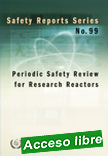 |
Environmental Impact Assessment of the Drawdown of the Chernobyl NPP Cooling Pond as a Basis for Its Decommissioning and Remediation
.
This publication provides technical and scientific information regarding the radiation monitoring, radio-ecological research and management of the Chernobyl Nuclear Power Plant (ChNPP) cooling pond. It focuses on the assessment of the environmental and radiological conditions after the pond drawdown, as a basis for justification of the decommissioning and remediation strategy for the pond.
|
Special attention is paid to the analyses of remedial actions to reduce ongoing or potential doses to members of the public and staff of the ChNPP due to radiological impacts resulting from the drawdown of water level in the pond. The publication also outlines practical experience gained throughout the cooling pond decommissioning project, which started in 2014 and continues until the present. It presents data from a monitoring programme, comparing modelling predictions of the dynamics of the cooling pond drainage and related radiological and ecological impacts, with the consequences of the drawdown of the water level in the cooling pond that were actually observed. Additionally, the publication summarizes lessons learned and addresses outstanding issues.
|
 |
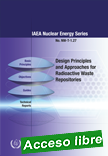 |
Review of Fuel Failures in Water Cooled Reactors (2006–2015)
An Update of IAEA Nuclear Energy Series No. NF-T-2.1
Since the 1970's, the IAEA has been involved in the analysis of fuel failures in water cooled reactors in normal (non-accident) operational conditions. This updated version of Nuclear Energy Series NF-T-2.1 provides information on all aspects of fuel failures in current nuclear power plant operations. It summarizes fuel failure occurrences, their mechanisms and root causes, as well as fuel failure prevention and management in plant operation for 97% of light and heavy water-cooled nuclear power units operated worldwide during the period 2006–2015.
|
Data on fuel failures 1987–2006 extracted from three previous IAEA fuel failure reports are included and analysed in the present publication together with the 2006–2015 fuel failure data to reveal long-term tendencies in fuel performance. In addition to fuel rod leakers, fuel structural damages and other fuel assembly issues are considered in the report.
|
 |
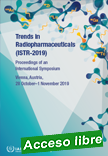 |
Application of Multi-criteria Decision Analysis Methods to Comparative Evaluation of Nuclear Energy System Options: Final Report of the INPRO Collaborative Project KIND
IAEA Nuclear Energy Series NG-T-3.20
This publication presents the results of a collaborative project on key indicators for innovative nuclear energy systems. It describes the approach and several case studies performed by Member States to evaluate, on a comparative basis, both nuclear energy system and nuclear energy evolution scenario options with evolutionary and innovative nuclear energy technologies and examines the applicability of this approach for different kinds of problems in the nuclear and non-nuclear energy planning fields. |
.
|
 |
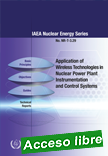 |
Knowledge Management Perspectives on Outsourcing in Operating Nuclear Power Plants
IAEA TECDOC No. 1884
This publication is intended to assist the management teams of operating organizations and nuclear power plants (NPPs) that outsource certain activities or use external services, in identifying and implementing an appropriate knowledge management strategy. A proactive approach to acquiring new organizational knowledge and the competence needed for operating NPPs is described.
|
The methodologies provided are applicable to outsourcing for all phases of the nuclear power plant life cycle including preparation, design, construction, operation, long term operation and decommissioning. While this publication applies primarily to NPPs and focuses on operating plant processes, it also may be relevant for other nuclear organizations, such as research facilities, technical support organizations, academic facilities, and nuclear fuel cycle facilities.
|
 |
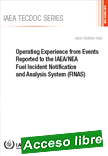 |
Training Curriculum for Nuclear Medicine Physicians
IAEA TECDOC No. 1883
This publication addresses the different components in which any well-trained nuclear medicine physician must be competent. It stresses the importance of providing support for the implementation of the prescribed programme, thus meeting the individual needs of trainees. Likewise, it emphasizes the appropriate duration of training necessary to acquire the competencies needed to provide adequate care to patients and ensure the safety and quality of clinical practice.
|
Moreover, the principles and practice of physics, radiochemistry, anatomy, physiology and clinical nuclear medicine, including hybrid imaging are discussed.
|
 |
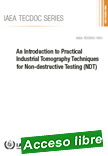 |
Nuclear–Renewable Hybrid Energy Systems for Decarbonized Energy Production and Cogeneration
Proceedings of a Technical Meeting Held in Vienna, 22–25 October 2018
IAEA TECDOC No. 1885
With more than 170 parties having ratified the Paris Agreement under the United Nations Framework Convention on Climate Change, viable, financially sound and integrated solutions for providing low carbon, affordable, energy is of critical interest. This, by necessity, encompasses the development of resilient production processes for the generation of electricity, heat, chemicals and fuels for deep decarbonization.
|
Two principal options for low carbon energy are renewables and nuclear energy. While many institutions have expressed interest in one or the other of these options, few have explored the possible synergies between them. This publication consists of the proceedings of an IAEA Technical Meeting held to review and discuss concepts and innovative solutions, including the advantages and challenges associated with each option, pertaining to nuclear–renewable hybrid energy systems for decarbonized energy production and cogeneration.
|
 |
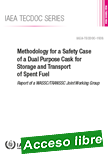 |
Country Nuclear Power Profiles - 2019 Edition
IAEA Non-serial Publications, 2019, s. p.
The Country Nuclear Power Profiles (CNPP) publication compiles background information on the status and development of nuclear power programmes across participating International Atomic Energy Agency (IAEA) Member States. The publication summarizes organizational and industrial aspects of nuclear power programmes and provides information about the relevant legislative, regulatory and international framework in each participating State.
|
The descriptive and statistical overview of the economic, energy and electricity situation in each State and its nuclear power framework is intended to serve as an integrated source of key background information about nuclear power programmes throughout the world. This 2019 edition contains updated country information for 26 out of 38 participating Member States.
|
 |
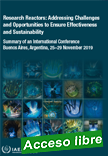 |
English-Spanish dictionary of nuclear technology
This publication collects terms related to nuclear energy to facilitate comprehension and translation of technical documents in English.
|
.
|
 |
 |
Energy, Electricity and Nuclear Power Estimates for the Period up to 2050
Reference Data Series No. 1
The 39th edition of the annual Reference Data Series No. 1 contains estimates of energy, electricity and nuclear power trends up to the year 2050, using a variety of sources, such as the IAEA’s Power Reactor Information System and data prepared by the United Nations.
|
|
 |
| |
|
|

|
|
|
| |
|
|
| |
| |
|
|
| |
| |
|
|
| |
| |
|
|
|
| |
| |
